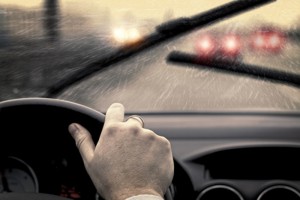 Rainy days aren’t the best to drive your car around, but if you have to go out and need to drive your car, then it is wise to drive safely. Extra care should be taken when you are traveling on the highways during rains or worse, storms of floods. No matter how good the condition of your car may be, it may not be able to sustain the power of flooding waters. In fact, no cars are built to be driven in heavy floods. So if you have a normal car and want to reach home safely, and in one piece, on a rainy day, here are a few tips you must remember.
Rainy days aren’t the best to drive your car around, but if you have to go out and need to drive your car, then it is wise to drive safely. Extra care should be taken when you are traveling on the highways during rains or worse, storms of floods. No matter how good the condition of your car may be, it may not be able to sustain the power of flooding waters. In fact, no cars are built to be driven in heavy floods. So if you have a normal car and want to reach home safely, and in one piece, on a rainy day, here are a few tips you must remember.
Check your car
Whether you are going for a long drive or simply driving around your neighborhood, make sure that your car is in good condition before you set out in the rain. Ensure that the brakes, the wipers and the tires are in good condition. If you even suspect that the car needs to be checked, get a mechanic to check it. Do not drive a car that needs a repair, no matter how small or insignificant it may seem.
Don’t speed
The biggest mistake that you can make when driving in wet weather is to speed. Speeding is dangerous even in the finest driving conditions and can prove to be fatal in wet weather. Drive slower than the usual speed and maintain enough distance between your vehicle and the vehicles ahead and behind you.
Remember that the risk of hydroplaning is around the corner during wet weather. Hydroplaning is the event when your car tires lose grip of the road and instead get more traction on the water on the road, causing the car to slide without control. So when there is water on the road, the thumb rule is to go slow.
Use your wipers
Make sure your wipers are working before you set out driving in the rain. Most importantly, use your wipers at all times to ensure that the road ahead is visible clearly. In case of fog or vapor inside the car, slow down and stop the car to a side, clean the windshield and other windows from inside and then hit the road again.
Cruise control is a bad idea in wet weather
Cruise control may be great in dry and normal weather conditions, but it is a bad idea in wet weather. This feature is common in most modern vehicle and drivers, especially teenagers, may be tempted to use it. However, resist the urge during wet weather for your own safety and safety of other people on the road.
In case of skidding
Skidding is very common during wet weather, which is why it is important for drivers to go slow during curves and turnings. No matter how careful you are, your vehicle might sometimes skid in wet weather. Skidding is a scary experience even for the most experienced driver. If you feel that your vehicle has started to skid, here is what you should do –
- Don’t panic. Try to reduce the speed by easing your foot on the gas and carefully steer the vehicle in the direction you want it to go.
- Avid applying brakes when the car is skidding if your car does not have anti-braking system (ABS)
- If it does, apply brakes firmly as you maneuver the care into the direction of your choice.
In any case, don’t apply the brakes suddenly and do not accelerate. As far as possible, it is best to try and avoid skidding by driving slowly and carefully.
